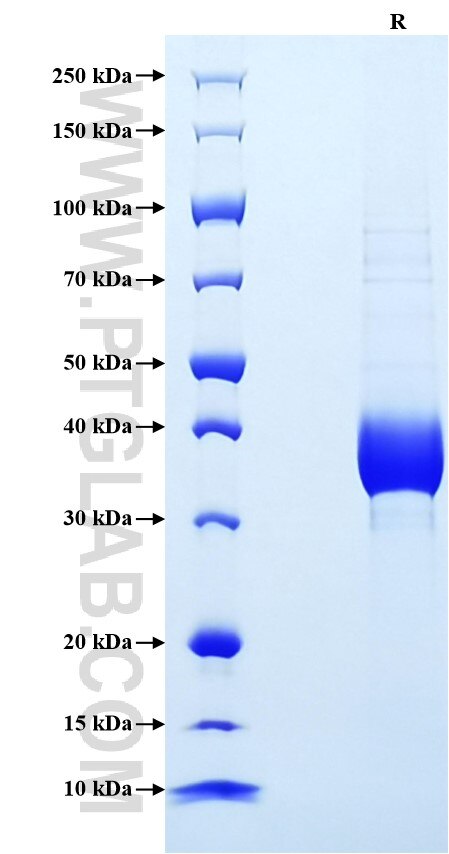Recombinant Mouse IGF1 protein (rFc Tag)
Species
Mouse
Purity
>90 %, SDS-PAGE
Tag
rFc Tag
Activity
not tested
Cat no : Eg1939
Validation Data Gallery
Product Information
| Purity | >90 %, SDS-PAGE |
| Endotoxin | <0.1 EU/μg protein, LAL method |
| Activity |
Not tested |
| Expression | HEK293-derived Mouse IGF-1 protein Gly33-Ala102 (Accession# Q8CAR0) with a rabbit IgG Fc tag at the N-terminus. |
| GeneID | 16000 |
| Accession | Q8CAR0 |
| PredictedSize | 34.9 kDa |
| SDS-PAGE | 32-42 kDa, reducing (R) conditions |
| Formulation | Lyophilized from 0.22 μm filtered solution in PBS, pH 7.4. Normally 5% trehalose and 5% mannitol are added as protectants before lyophilization. |
| Reconstitution | Briefly centrifuge the tube before opening. Reconstitute at 0.1-0.5 mg/mL in sterile water. |
| Storage Conditions |
It is recommended that the protein be aliquoted for optimal storage. Avoid repeated freeze-thaw cycles.
|
| Shipping | The product is shipped at ambient temperature. Upon receipt, store it immediately at the recommended temperature. |
Background
Insulin-like-growth factor 1 (IGF-1), a 70 amino-acid peptide hormone is the principal mediator of biochemical effects of growth hormone (GH). IGF-1 is an important growth factor in the regulation of cell proliferation and differentiation. IGF-1 is largely synthesized in the liver (75%) and, to a lesser extent, in peripheral tissues. IGF-1 have been shown to play an essential role in preventing the formation of fatty liver. IGF-1 is a potent mitogen and is inhibited by IGF-binding protein-3 (IGFBP3). High serum IGF-1 and low IGFBP3 are associated with increased risk of several carcinomas. Mice lacking IGF-1 exhibit generalized organ hypoplasia including underdevelopment of the central nervous system and developmental defects in bone, muscle and reproductive systems.
References:
1. Adamo ML. et al. (1993). Adv Exp Med Biol. 343:1-11. 2. Adachi Y. et al. (2019). J Gastroenterol Hepatol. 34(12):2104-2111. 3. Anisimov VN. et al. (2019). Crit Rev Oncol Hematol. 87(3):201-23. 4. Sonntag WE. et al. (2012). J Gerontol A Biol Sci Med Sci. 67(6):587-98.
